Choosing the wrong material cutting board
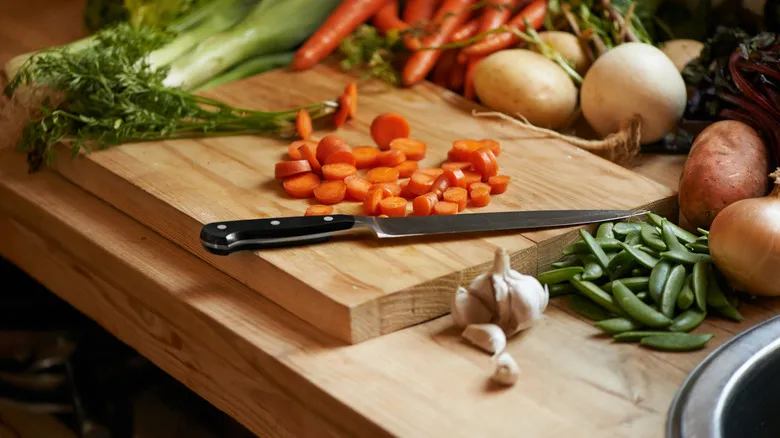
Cutting boards come in various materials, such as wood, plastic, and glass. However, using the wrong type can make food preparation more difficult and even pose safety risks.
Each material has its advantages and disadvantages. Glass cutting boards are non-porous and won't absorb bacteria, but they can dull knives, break easily, and become slippery, which can be hazardous. Plastic boards are affordable and dishwasher safe, but they can develop grooves that trap bacteria and are challenging to clean.
Wood cutting boards are a favored option. They are gentler on knives, helping to keep them sharp, and generally have a longer lifespan than plastic boards. However, they require more maintenance and, being porous, can harbor bacteria and lead to cross-contamination.
The United States Department of Agriculture (USDA) suggests using bamboo cutting boards. Bamboo is less porous than many other woods, making it easier to clean and reducing the risk of bacterial growth. However, this hardness can also lead to knife dulling if not handled with care.
Using the same cutting board for everything

Cross-contamination occurs when bacteria or allergens from one food item transfer to another, which can lead to illness and pose significant risks for individuals with food allergies.
Raw meat and poultry are particularly problematic in this regard. Contaminants like Salmonella and E. coli are commonly associated with these foods, but they can also carry a variety of other germs and bacteria that can result in food poisoning.
To effectively prevent cross-contamination, it is advisable to use multiple cutting boards. The USDA suggests designating one cutting board for raw meat, poultry, and shellfish, while using a separate one for fruits, vegetables, bread, and any foods that won’t be cooked. This practice helps to keep bacteria from raw meat and poultry from tainting other food items.
If there are concerns about allergens, it is also important to use a distinct cutting board when preparing food that contains that allergen. This measure helps to avoid the spread of allergens to other foods, reducing the risk of an allergic reaction.
Not properly sanitizing your cutting board

Certain types of cutting boards can retain bacteria, which increases the risk of cross-contamination if they are not cleaned and sanitized properly. This can result in food poisoning, making it crucial to adhere to safety guidelines for cleaning your cutting board.
While some cutting boards are dishwasher-safe, many—particularly those made of wood—are not. For wooden cutting boards, it is essential to wash them thoroughly with hot, soapy water on both sides immediately after use. After handling raw meat, poultry, or fish, be sure to wash your cutting board with hot, soapy water and then disinfect it.
To disinfect your cutting board, soak it in a solution of one tablespoon of liquid bleach per gallon of water. Allow it to soak for several minutes to ensure that all germs and bacteria are effectively eliminated. After washing and disinfecting, rinse the cutting board with water to remove any soap and bleach residue. You can then either pat it dry with clean paper towels or let it air dry. Ensure that your cutting board is completely dry before storing it.
Putting your cutting board away while it's still wet
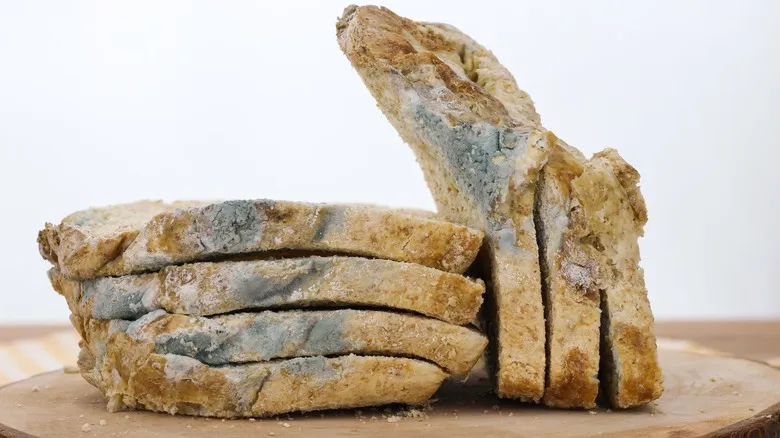
Mold and mildew thrive in dark, damp conditions. When you store your cutting boards, particularly wooden ones, while they are still wet, you create an ideal environment for fungi to flourish. Spores can enter through pores, cracks, or cuts, and once established, they can be challenging to eliminate.
If mold develops on your cutting board, it can contaminate your food. This can spoil certain items—imagine slicing a fresh loaf of bread, putting it away, and later finding it covered in mold. While not all mold is harmful, it’s impossible to determine its safety just by appearance, so any moldy food should be discarded to prevent illness. Some molds can lead to respiratory issues, nausea, and vomiting, posing a particular risk to individuals with mold allergies.
Mild mold and mildew can be treated with a bleach solution of one tablespoon of liquid bleach per gallon of water. Soak the board for a few minutes, rinse it with water, and then either pat it dry or allow it to air dry completely, ideally on a drying rack. You may still see some discoloration from the mold, but it won’t pose a health risk. However, if your cutting board has a fuzzy appearance or visible spots, it’s best to dispose of it for safety.
Forgetting to season your cutting board

One of the most effective ways to safeguard and extend the lifespan of your wooden cutting board is by seasoning it, which involves applying a coat of oil. This process serves two main functions. Firstly, it fills the wood's pores, preventing bacteria and other harmful pathogens from penetrating the board. Secondly, it moisturizes the wood, reducing the likelihood of cracks or splinters.
To season your board, select a food-safe mineral oil, linseed oil, or beeswax. You can also find products specifically designed for cutting boards, such as cutting board cream. Pour a few tablespoons onto a clean, dry cutting board, ensuring it is sufficiently coated. Then, use a soft cloth or paper towel to rub the oil in a circular motion across the surface, making sure to cover every corner. Alternatively, you can apply the oil directly to the cloth and then massage it into the wood. Be sure to wipe away any excess oil; the board should not be dripping when you finish.
It's generally advisable to repeat this process, particularly for a board that hasn't been oiled previously. Allow the board to air-dry overnight, and give it another wipe down before storing it. Aim to oil your cutting board approximately once a month, depending on how frequently you use it. This technique can also be applied to other wooden kitchen utensils, such as wooden spoons or spatulas.
Not picking a cutting board with wells
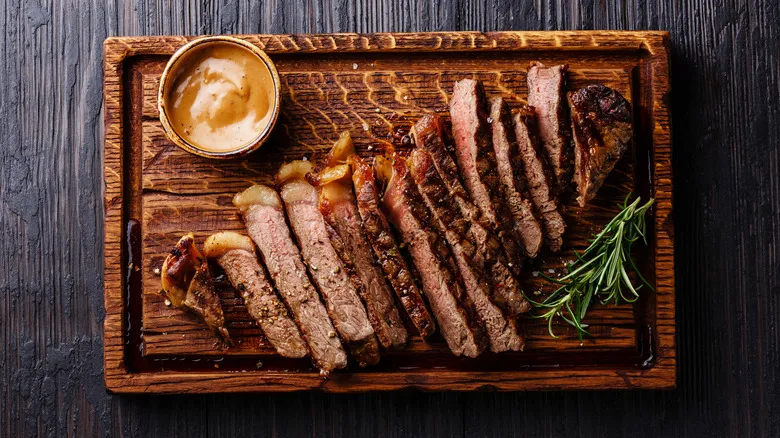
You might observe that some cutting boards feature grooves or indentations on their surfaces. These are known as wells or juice canals, and they serve a crucial purpose: they collect the liquid released from foods during cutting.
For instance, chicken often releases a significant amount of juice when sliced, particularly if it has been thawed. The wells help contain this juice, preventing it—and any harmful bacteria it may harbor—from spilling onto your countertop or table. They are also useful for catching the sticky juices from sliced fruits or water from freshly washed vegetables, simplifying the cleanup process. Just remember to move your wet cutting board to the sink carefully to avoid spills!
If you're serving delicious pork tenderloin or a juicy steak, a wooden cutting board with wells can also function as a serving platter, ensuring that none of the flavorful juices go to waste.
While wells or juice canals in cutting boards are excellent for minimizing mess, they require proper maintenance. When cleaning, be sure to scrub all the grooves thoroughly, and don’t forget to apply oil to the wells when seasoning your cutting board.
Cutting on a board that's too small
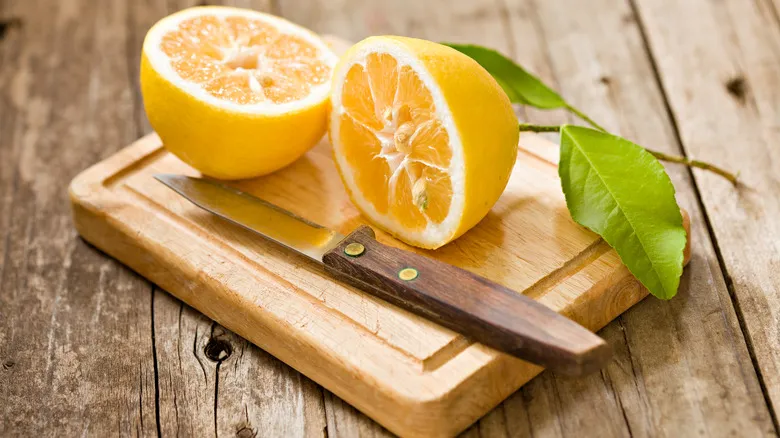
Compact cutting boards are charming and convenient to store, but they may not always be the most effective or safe option. Using a cutting board that is too small for the food can create a mess and hinder your ability to maneuver the knife properly, increasing the risk of losing control and potentially injuring yourself.
When selecting the appropriate cutting board size, there are several factors to keep in mind. First, it should fit comfortably in your workspace. You need to be able to place the cutting board flat on the counter without any obstructions that could cause it to tip or fall. The dimensions of the food you’re preparing are also crucial. While a small cutting board works well for slicing lemons or apples, attempting to cut a whole loaf of bread on one can result in a scattering of crumbs.
Additionally, your cutting board must be sufficiently large to accommodate the knife you’re using. A paring knife is well-suited for a small board, but a chef's knife requires a larger surface. Ideally, you should be able to lay your knife diagonally across the board, with at least an extra inch of space on both ends.
You aren't securing your cutting board
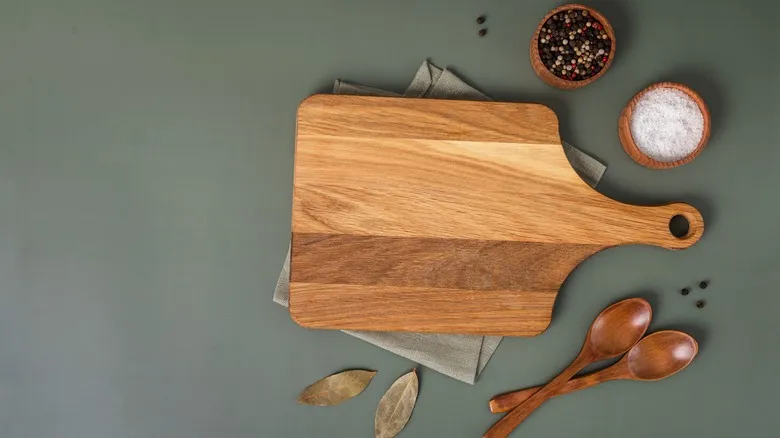
Neglecting to secure your cutting board is a common error that can lead to messy or hazardous cooking experiences. A cutting board that slides around on your countertop can cause spills and increase the risk of losing control of your knife, potentially resulting in cuts.
Before placing your cutting board down, ensure that both the countertop and the board are dry. If either surface is wet, the board is more likely to slip, particularly if it’s made of glass or plastic. Be sure to clean up any spills before setting down your cutting board. Some cutting boards feature non-slip feet, but you can also purchase these separately and attach them yourself. Some options adhere with adhesive, while others require screws for a more secure fit. Additionally, there are cutting board mats designed specifically to provide stability.
In a pinch, a damp paper towel can also work effectively. Simply wet a few paper towels, wring out the excess water, lay them flat on the countertop, and place the cutting board on top. This will help keep the board steady. Other alternatives include a damp kitchen towel or a kitchen liner mesh. The material you choose doesn’t need to match the size of the cutting board.
Scraping your knife against your cutting board
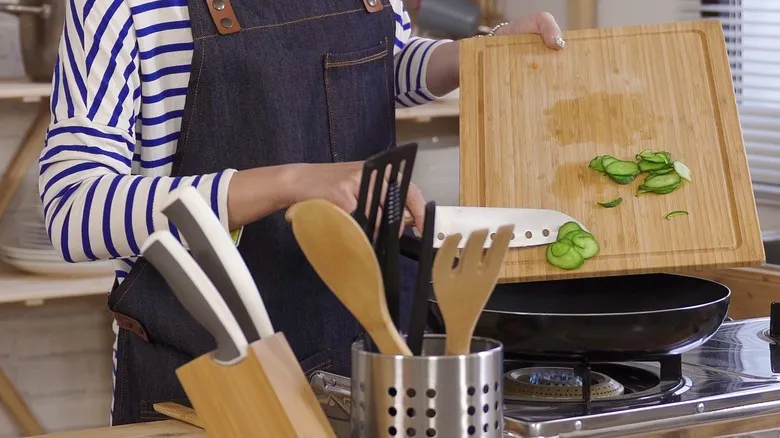
It's a common practice: after chopping your chicken or vegetables, you’re ready to transfer them to the pot. You lift your cutting board and, using the edge of your knife, scrape the food into the pot. However, this habit can be detrimental to both your knife and your cutting board.
When you scrape your knife against the board, it quickly loses its sharpness. A dull knife makes cutting more difficult and can tear your food instead of providing clean cuts. You may find yourself applying more pressure to cut through, which can compromise your control over the knife and pose a safety risk.
This added pressure also harms your cutting board, causing more nicks and scratches. Not only does this create an unattractive appearance, but it also leads to hard-to-clean areas where bacteria and mold can thrive. Additionally, scraping your knife can remove tiny bits of wood from a wooden board or plastic from a plastic one, and nobody wants slivers or microplastics in their meals. If you’re using a glass cutting board, the scraping sound can be quite unpleasant.
Instead, consider using the blunt edge of your knife to transfer food from the cutting board. Other alternatives include forks, kitchen spoons, spatulas, or even your clean hands!
Continuing to use a damaged cutting board
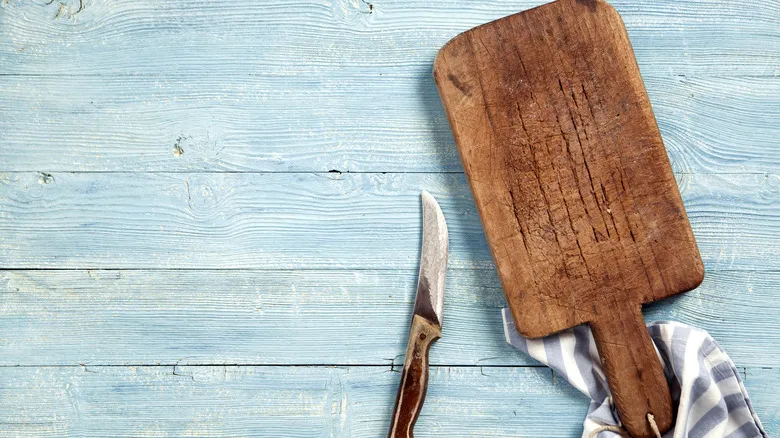
Ideally, your cutting board should serve you well for several years. Most plastic boards can endure at least a year with regular use, while proper care can extend the lifespan of a wooden cutting board even further. However, if your cutting board is aging or showing significant signs of wear, it’s time for a replacement.
If your cutting board has warped, regardless of the material, it should be discarded. A warped board creates an uneven and unstable cutting surface, which can lead to juices spilling over and spreading bacteria or sticky substances onto your countertops. It can also hinder your knife control, increasing the risk of injury.
A plastic cutting board with deep cuts or grooves must also be replaced. These imperfections cannot be repaired, and as previously mentioned, such crevices are ideal breeding grounds for microorganisms.
On the other hand, cuts and grooves on a wooden cutting board may be repairable. You might be able to sand down the surface to eliminate these flaws, after which you should rinse, dry, and re-season the board. However, if the cuts are too deep to sand down, the board is beyond saving. Additionally, any wooden cutting board with cracks should be discarded, as these cannot be repaired.
Recommended

How Ketchup Can Help Clean Burnt Sugars From A Pan
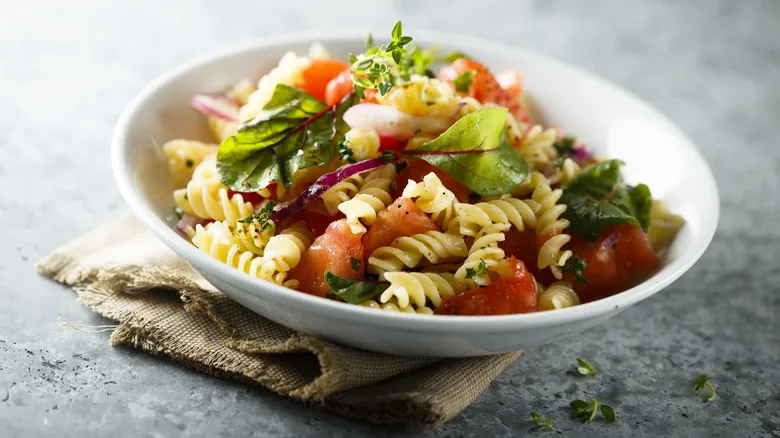
Mistakes Everyone Makes With Pasta Salad
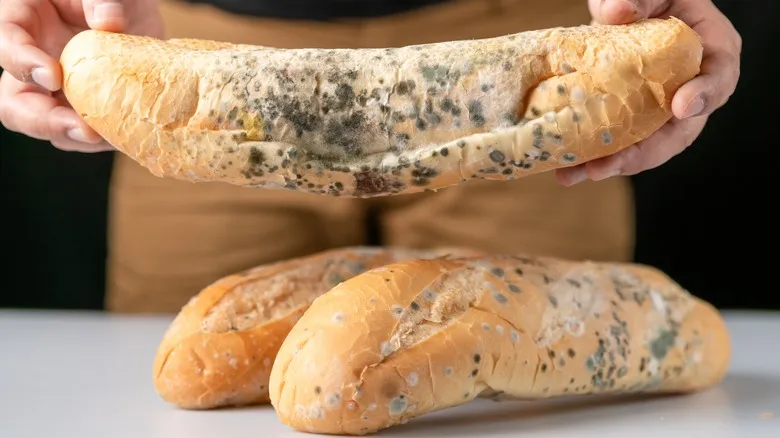
What To Do If You Accidentally Eat Mold

Why Sage Works So Well With Pineapple Flavors
Next up

